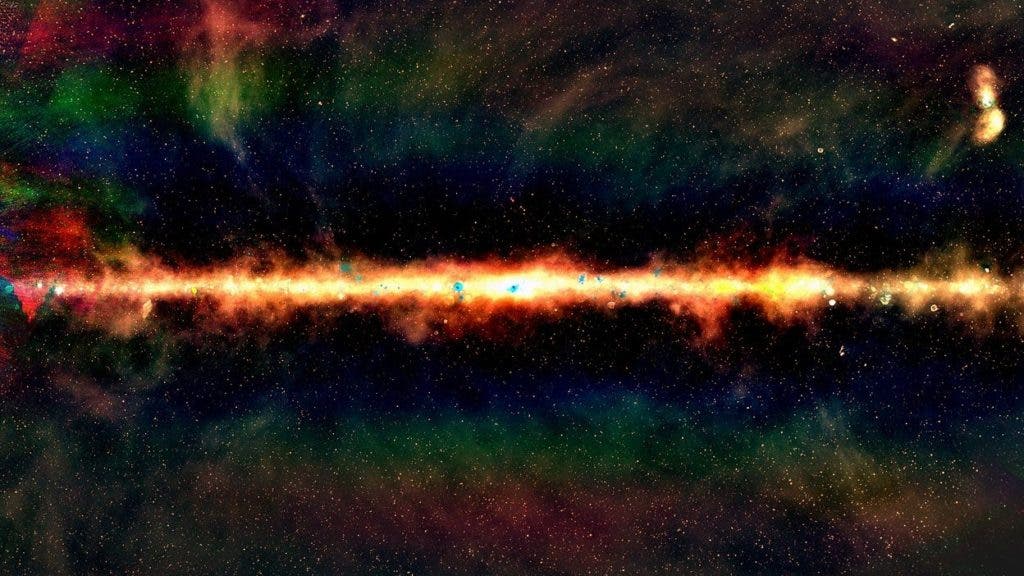With data from a West Australian radio telescope, a team of scientists shows us what the world would look like if we could see radio waves. And it’s spectacular.

A ‘radio colour’ view of the sky above a ’tile’ of the Murchison Widefield Array radio telescope.
Image credits Natasha Hurley-Walker (ICRAR / Curtin) and the GLEAM Team, Dr John Goldsmith / Celestial Visions.
The Galactic and Extragalactic All-sky MWA, or the GLEAM survey, is a large-scale effort to pick up on the radio waves that are traveling through the Universe all around us. So far, it has charted 300,000 galaxies observed by the Murchinson Widefield Array (MWA), a 50$ million radio telescope north-east of Geraldton, Australia. Not only does the telescope see further than our eyes could — it also “sees” a much wider spectrum of electromagnetic radiation.
“The human eye sees by comparing brightness in three different primary colours – red, green and blue,” said lead author of these images catalogue, Dr. Natasha Hurley-Walker from Curtin University and the International Centre for Radio Astronomy Research.
“GLEAM does rather better than that, viewing the sky in each of 20 primary colours. That’s much better than we humans can manage, and it even beats the very best in the animal kingdom, the mantis shrimp, which can see 12 different primary colours.”
The data has been translated into colors the human eye can see — red for the lower frequencies, green for middle ones, and blue for the highest — the first survey to image the sky in such vivid technicolor, Hurley-Walker added. GLEAM looks at electromagnetic waves (the same stuff we see as light) from frequencies between 70 to 230 MHz. The stuff they watch is amazing — clusters of galaxies colliding, echoes of ancient stars exploding, and “the first and last gasps” of supermassive black holes.
“The area surveyed is enormous,” said MWA director Dr Randall Wayth. “Large sky surveys like this are extremely valuable to scientists and they’re used across many areas of astrophysics, often in ways the original researchers could never have imagined.”
The GLEAM survey is a big step on the part to completing the SKA-low, the low-frequency part of the international Square Kilometre Array radio telescope which will be built in Australia in the coming years.
“It’s a significant achievement for the MWA telescope and the team of researchers that have worked on the GLEAM survey,” Dr Wayth said.
“The survey gives us a glimpse of the Universe that SKA-low will be probing once it’s built. By mapping the sky in this way we can help fine-tune the design for the SKA and prepare for even deeper observations into the distant Universe.”










